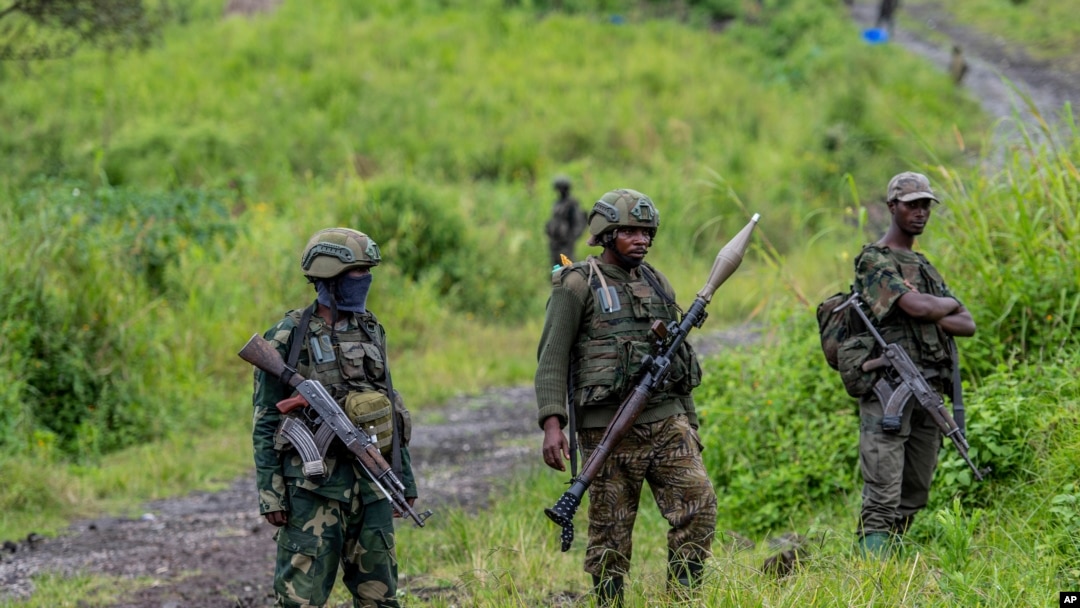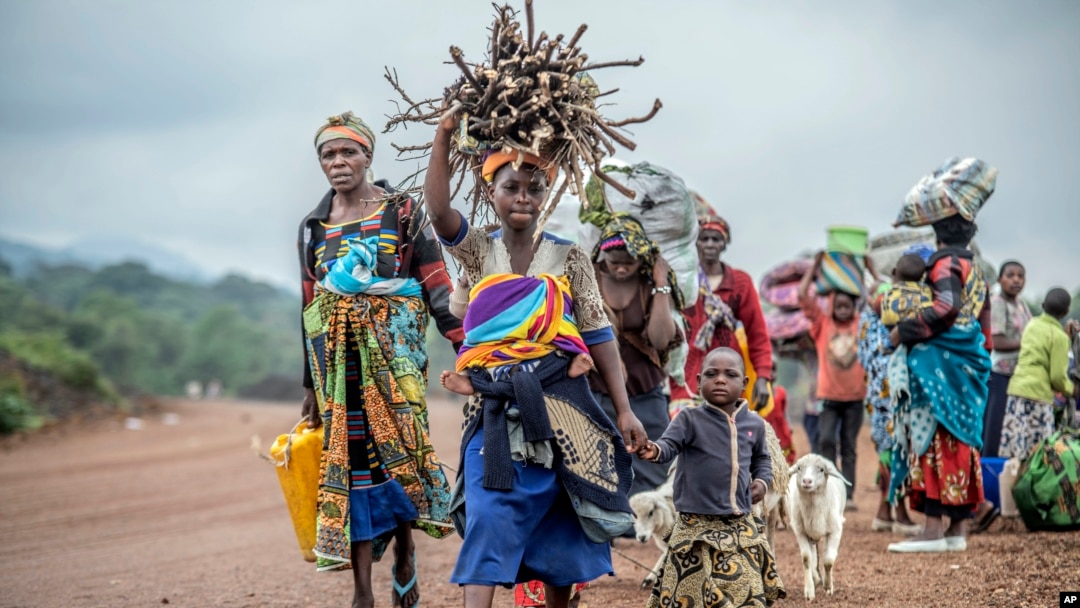Torched villages and young gunmen in army fatigues populate the landscape between Goma, a city in volatile eastern Democratic Republic of Congo, and the town of Kitshanga that is 80 kilometers (50 miles) away.
M23 rebels and militias that pledged loyalty to DRC broke a precarious truce that lasted for months, following the resumption of hostilities in the Central African nation's eastern region.
In a rare victory against M23 rebels, the loyalist militias this month said they regained the strategic town of Kitshanga, in North Kivu's Masisi province.
The Tutsi-led rebel group with alleged links to Rwanda, launched an offensive in late 2021 and defeated the Congolese army in a series of clashes, capturing swathes of North Kivu and driving over one million people from their homes.
AFP joined a press trip to Kitshanga that was held over the weekend and was organized by military officials in the Democratic Republic of Congo.
Security for the journalists' trip was provided by Congo Protection, a private military company that has worked in the region since the beginning of 2023 and comprises of 1,000 people that mostly hail from Eastern Europe.
Officially, the Congolese army is observing a cease-fire with the M23.
Despite the cease-fire, Congolese residents and security officials said the army is lending support to militias loyal to the government — known locally as "Wazalendo."
In Kitshanga, close to the current frontlines, the atmosphere remained calm. Women sold food at the market, shops were open and dozens of armed men —both soldiers and militiamen — were strolling about.
- 'Free the country' -
Tantine Daphrose, a 30-year-old mother of six and member of the government-aligned APCLS militia, was dressed in a Congolese army uniform.
"I have abandoned my children," said the woman, who is an ethnic Hutu. She explained that she had joined the militia to "free the country" from the M23.

FILE - M23 rebels stand with theirs weapons during a ceremony to mark the withdrawal from their positions in the town of Kibumba, in the eastern of Democratic Republic of Congo, on Dec. 23, 2022
An APCLS leader, Col. Ngowa Luwanda, later addressed reporters in Kitshanga, saying the militia is made of up of several different tribes who "say no to the invasion of our country."
Luwanda, who described himself as the "Wazalendo chief of operations," explained that the goal was to hunt the enemy down, "up to the borders of Congo."
He noted, however, there was no intention to cross over into Rwanda
As part of a condition of the press trip to Kitshanga, reporters were neither allowed to photograph the private military contractors nor film Congolese soldiers.
Interviews were also conducted in the presence of Congolese officials.
- 'Not afraid of death'-
The officials stopped reporters from leaving the organised tour and interviewing Kitshanga residents alone.
A photographer was also forced to delete some images after his camera was inspected.
John Ishara, a town resident, said, "When the government came in, everyone cheered."
"We didn't know whether they would succeed or not, but now we believe in them."
FILE Arrested members of the Wazalendo sect are sat and lined up in Goma, Democratic Republic of the Congo, Aug. 30, 2023. More than 40 people died in clashes in the Congolese city of Goma between protesters from the Wazalendo religious sect and the armed forces.
At the beginning of October, local militias entered Kitshanga, taking over from soldiers from a regional East African force that had established buffer zones between the M23 and the army.
The M23 then took the town from local militias, and held it for a day, before retreating. Clashes have continued on the outskirts of Kitshanga in recent days.
Stephane Dujarric, a spokesman for UN Secretary-General Antonio Guterres, said 2,000 people had taken refuge in a UN base in Kitshanga, with 18,000 more sheltering just outside it.
"We are asking the government to help us," said Tantine Daphrose, the militiawoman.
"I'm going to fight to the end, I'm not afraid of death," she added.


